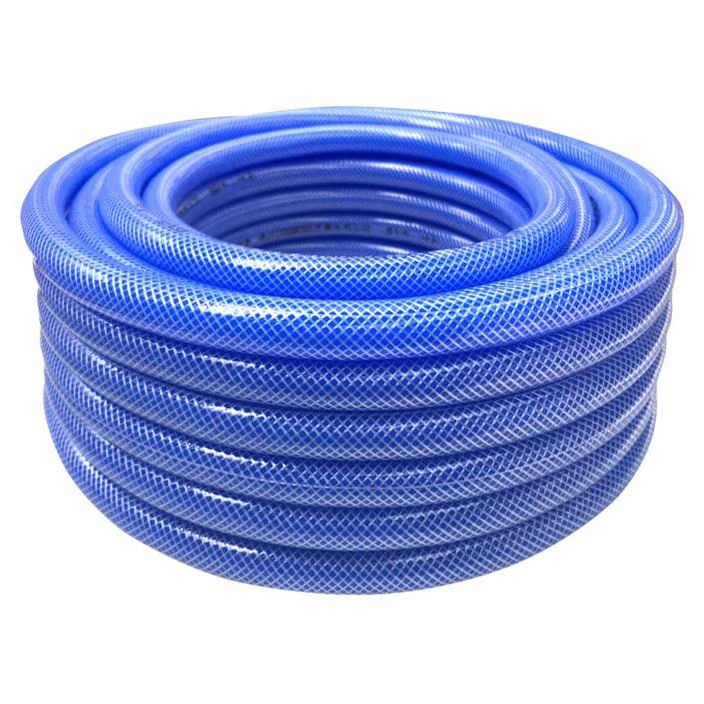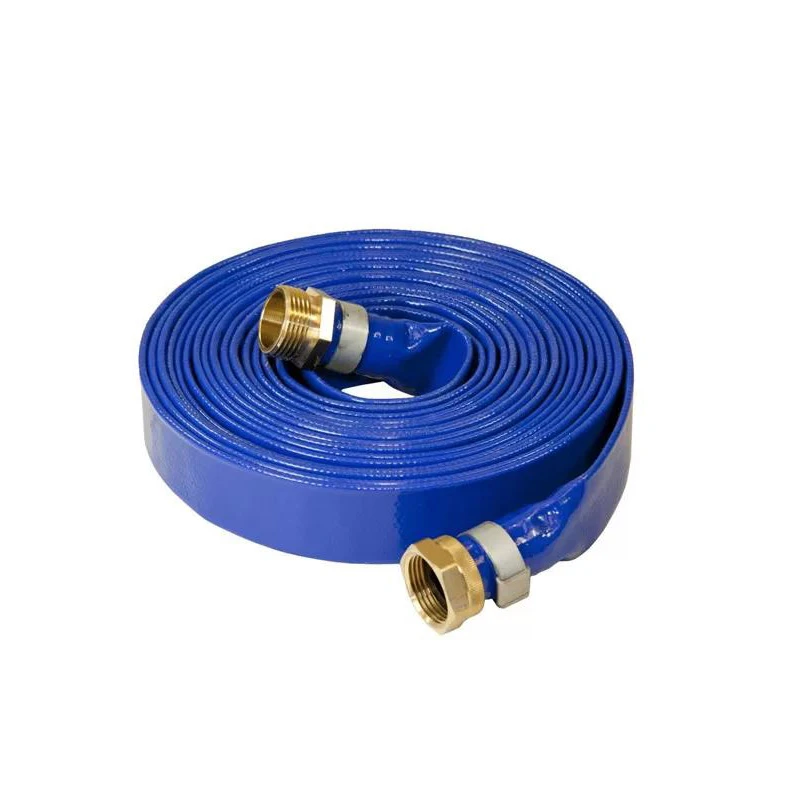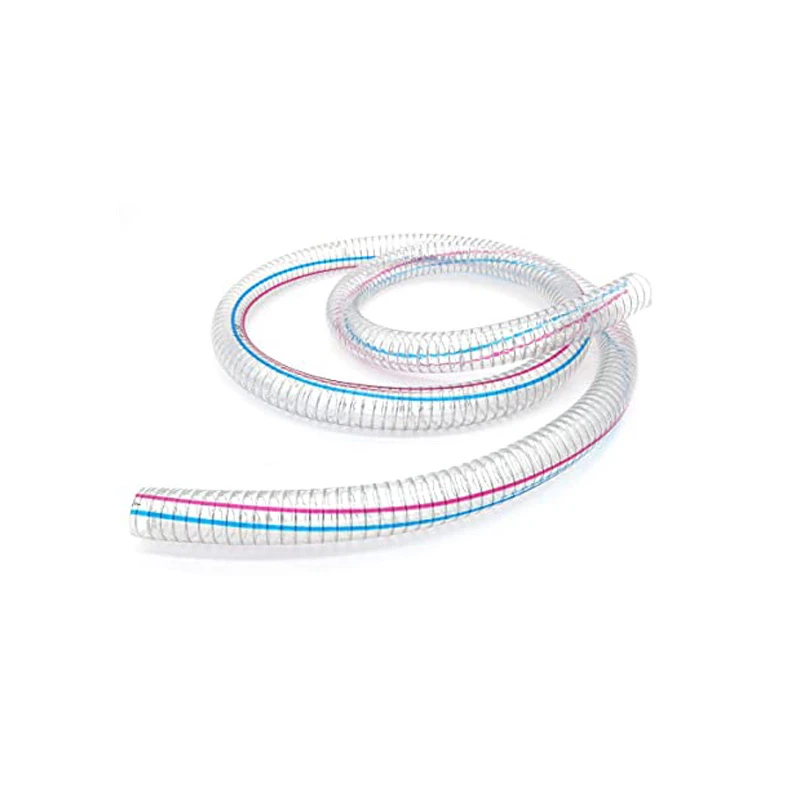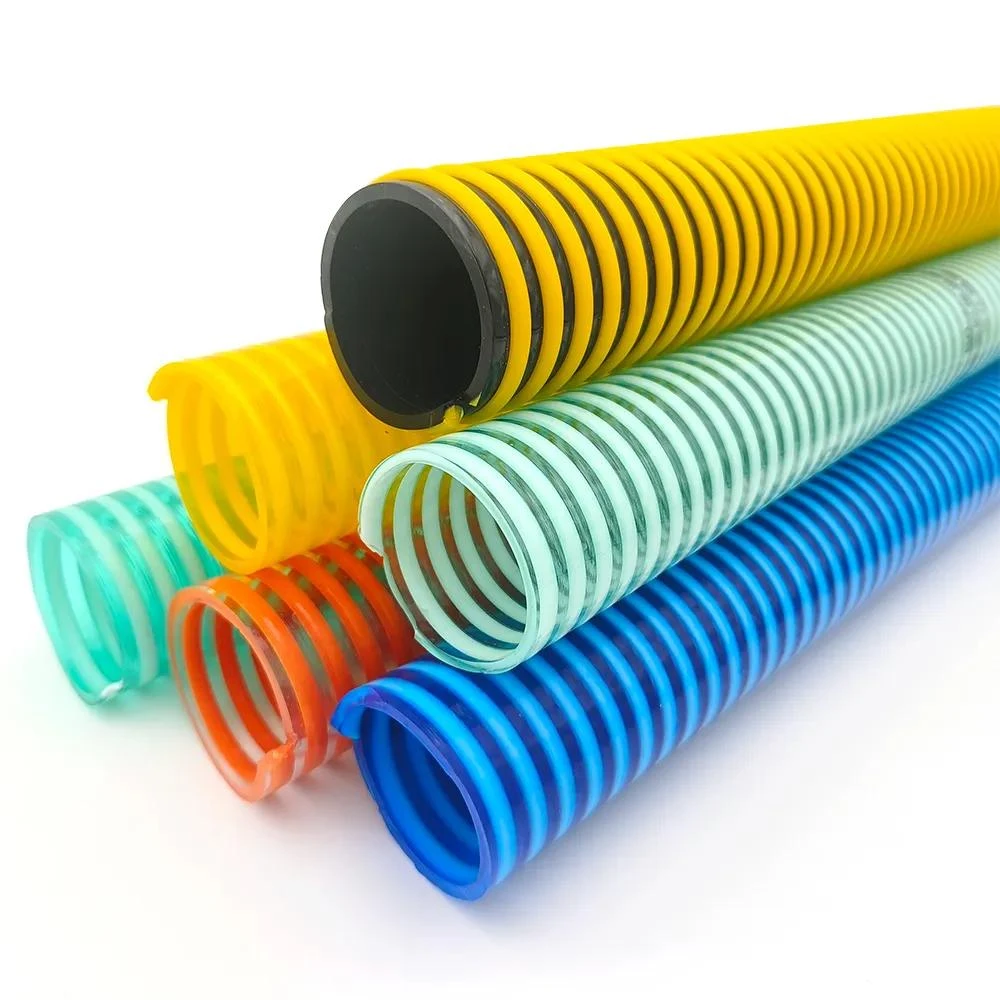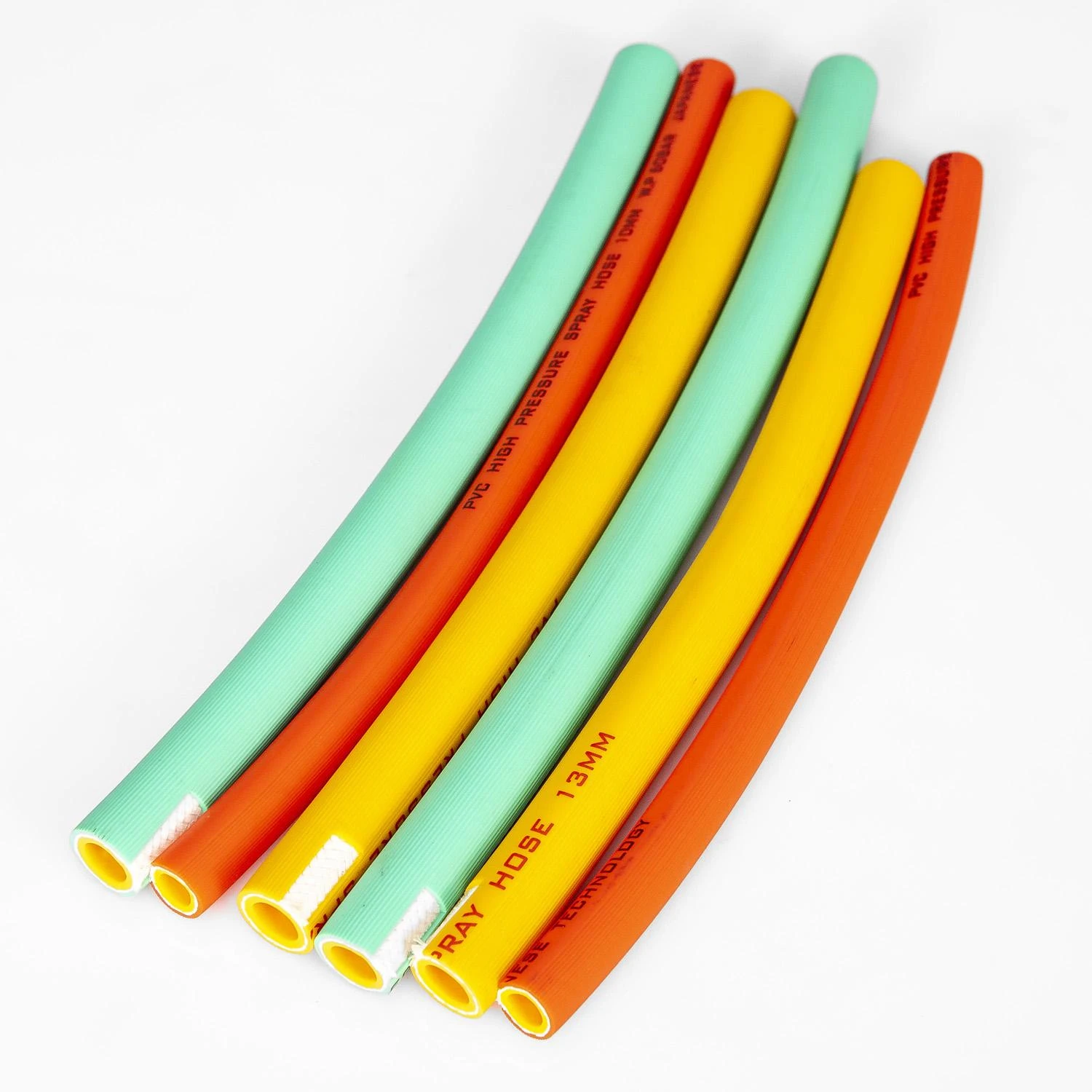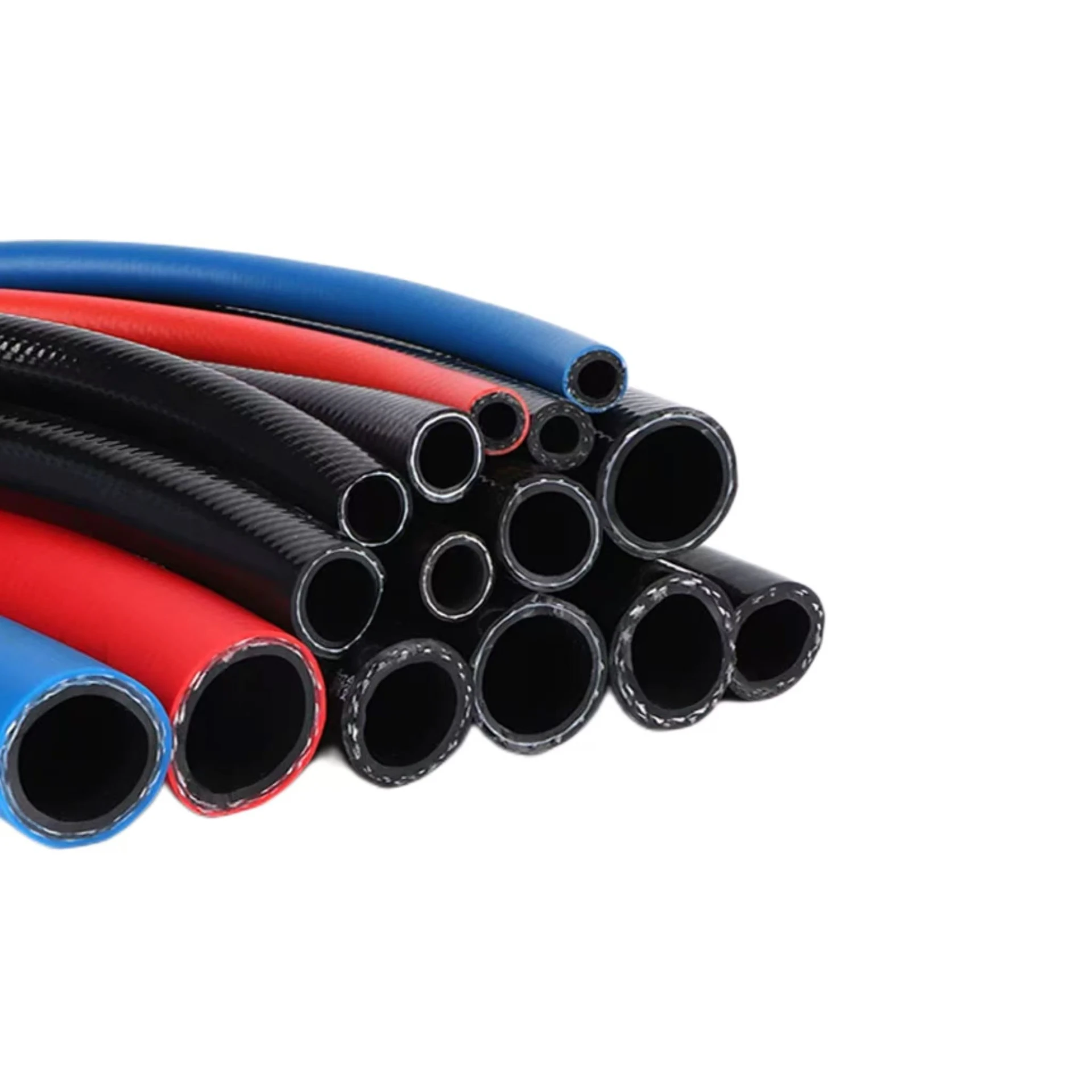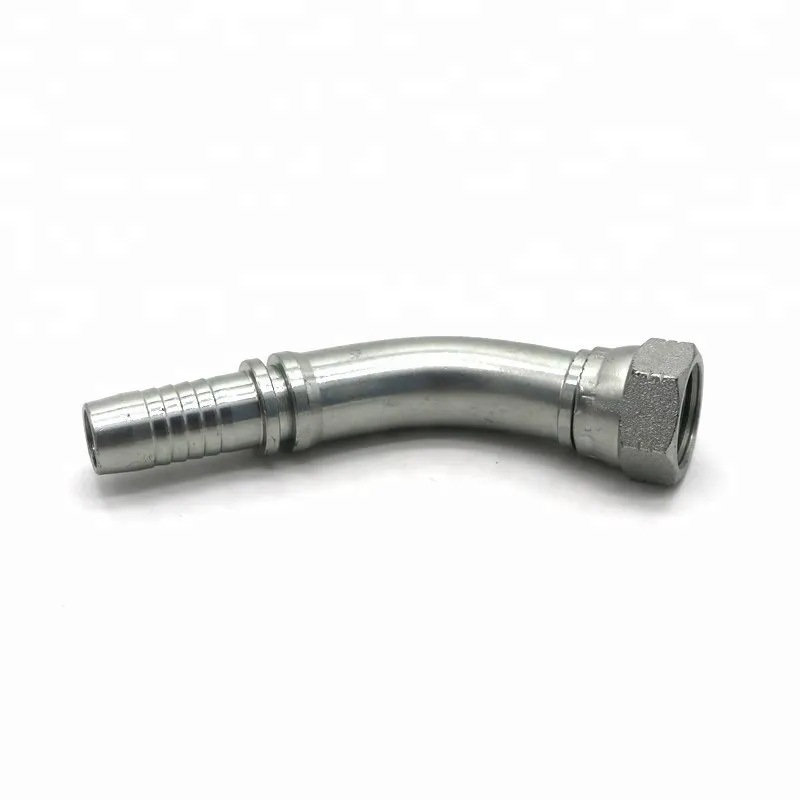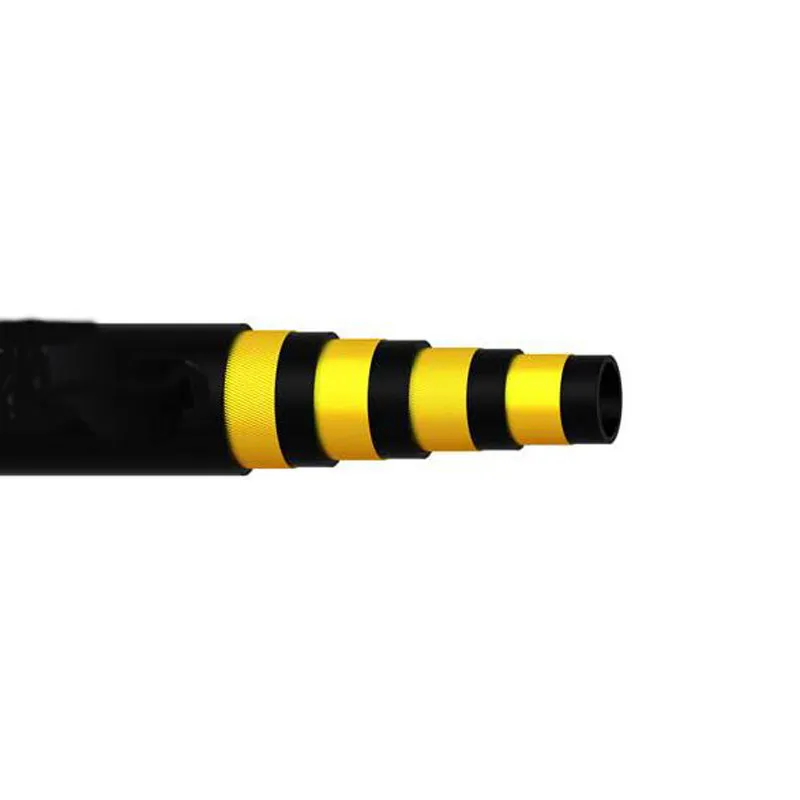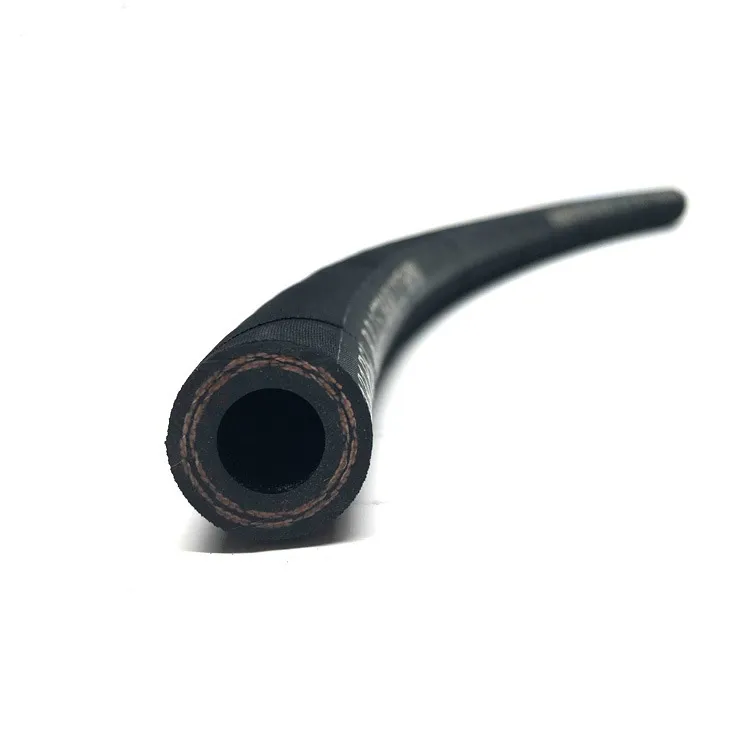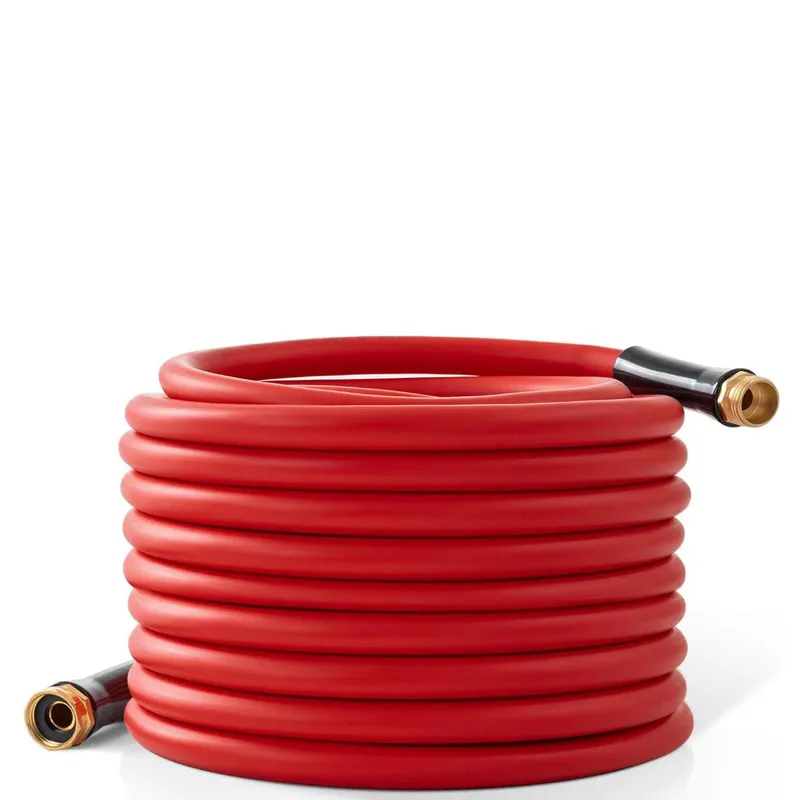The Crucial Role of SAE 100 R4 Hydraulic Hoses in Industrial Applications
In the realm of modern industrial machinery and equipment, the integrity and performance of hydraulic systems are paramount. At the core of these systems lies the hydraulic hose, a critical component responsible for transmitting fluid power reliably and efficiently. Among the various classifications, the SAE 100 R4 specification denotes a heavy-duty, wire-reinforced suction and return hose engineered for low-pressure applications, specifically designed to handle petroleum-based hydraulic fluids within a temperature range of -40°C to +100°C (-40°F to +212°F). Its robust construction makes it indispensable across numerous sectors, ensuring operational continuity and safety where fluid transfer under suction or low pressure is required.
This comprehensive guide delves into the technical intricacies, manufacturing processes, application versatility, and strategic advantages of SAE 100 R4 hoses, providing B2B decision-makers and engineers with essential insights for optimal system design and procurement. We will explore its contribution to industry trends, detail its specifications, and offer data-backed perspectives to underscore its value in demanding environments.
Industry Trends and the Evolution of SAE 100 R4 Hoses
The industrial landscape is continuously evolving, driven by demands for increased efficiency, enhanced safety, and reduced environmental impact. For hydraulic components like the SAE 100 R4 hose, this translates into several key trends:
- Material Innovation: Advancements in synthetic rubber compounds and reinforcement materials are leading to hoses with superior abrasion resistance, ozone resistance, and chemical compatibility, extending service life and reducing maintenance.
- Eco-Friendly Solutions: There's a growing push for hoses compatible with biodegradable hydraulic fluids and manufacturing processes with lower environmental footprints.
- Higher Performance in Low-Pressure: While primarily for suction and return, ongoing improvements aim to offer robust performance under transient low-pressure surges and sustained suction without collapse.
- Smart Systems Integration: Future trends may include hoses integrated with sensors for condition monitoring, allowing for predictive maintenance and real-time performance tracking, enhancing the reliability of systems using SAE 100 R4.
- Global Standardization and Traceability: Increased emphasis on adherence to international standards (ISO, EN) and full product traceability from manufacturing to end-use to ensure quality and safety across global supply chains.
These trends underscore the importance of selecting high-quality components like the SAE 100 R4 hose, which can adapt to evolving operational demands and contribute to the overall resilience and sustainability of industrial systems.
Technical Specifications and Construction of SAE 100 R4
The SAE 100 R4 hose is specifically engineered to meet the stringent requirements of suction and return lines in medium to heavy-duty industrial applications. Its construction is robust and designed for longevity and reliability under challenging conditions. Typically, an SAE 100 R4 hose comprises three main layers:
- Inner Tube: Constructed from an oil-resistant synthetic rubber compound, often Nitrile (NBR), which ensures excellent compatibility with petroleum-based hydraulic fluids, mineral oils, and anti-wear fluids. This layer prevents degradation from the conveyed media and maintains fluid purity.
- Reinforcement: A critical layer consisting of one or more plies of textile braid or spiral-plied synthetic yarn, often combined with a helical spiral wire. The wire prevents hose collapse under vacuum or suction conditions, while the textile reinforcement provides structural integrity and moderate pressure resistance for return line service.
- Outer Cover: Made from a weather, abrasion, and oil-resistant synthetic rubber compound (e.g., Neoprene or a blend). This cover protects the inner layers from external environmental factors, including ozone, UV radiation, abrasion, and corrosive chemicals, ensuring durability in harsh industrial settings.
The design ensures flexibility, enabling easy routing in complex machinery, and provides effective dampening of vibrations transmitted through hydraulic lines. The vacuum resistance is a distinguishing feature, preventing kinking and collapse even under high suction loads.
Key Product Specifications for Hydraulic Hose SAE R4
| Parameter | Typical Value / Description | Unit / Standard |
|---|---|---|
| Hose Type | SAE 100 R4, Suction and Return | SAE J517 |
| Inner Tube Material | Oil-resistant Synthetic Rubber (e.g., Nitrile) | |
| Reinforcement | Textile braid with helical spiral wire | |
| Outer Cover Material | Abrasion, Ozone & Weather-resistant Synthetic Rubber | |
| Temperature Range | -40°C to +100°C (-40°F to +212°F) | |
| Operating Pressure (Max) | Up to 0.7 MPa (7 bar / 100 psi) - Varies by ID | ISO 1436 |
| Vacuum Resistance | Full vacuum (750 mmHg / 29.5 inHg) | |
| Bend Radius (Min) | 6 to 10 times ID (Varies by ID) | |
| Fluid Compatibility | Petroleum-based hydraulic fluids, mineral oils, water-glycol solutions |
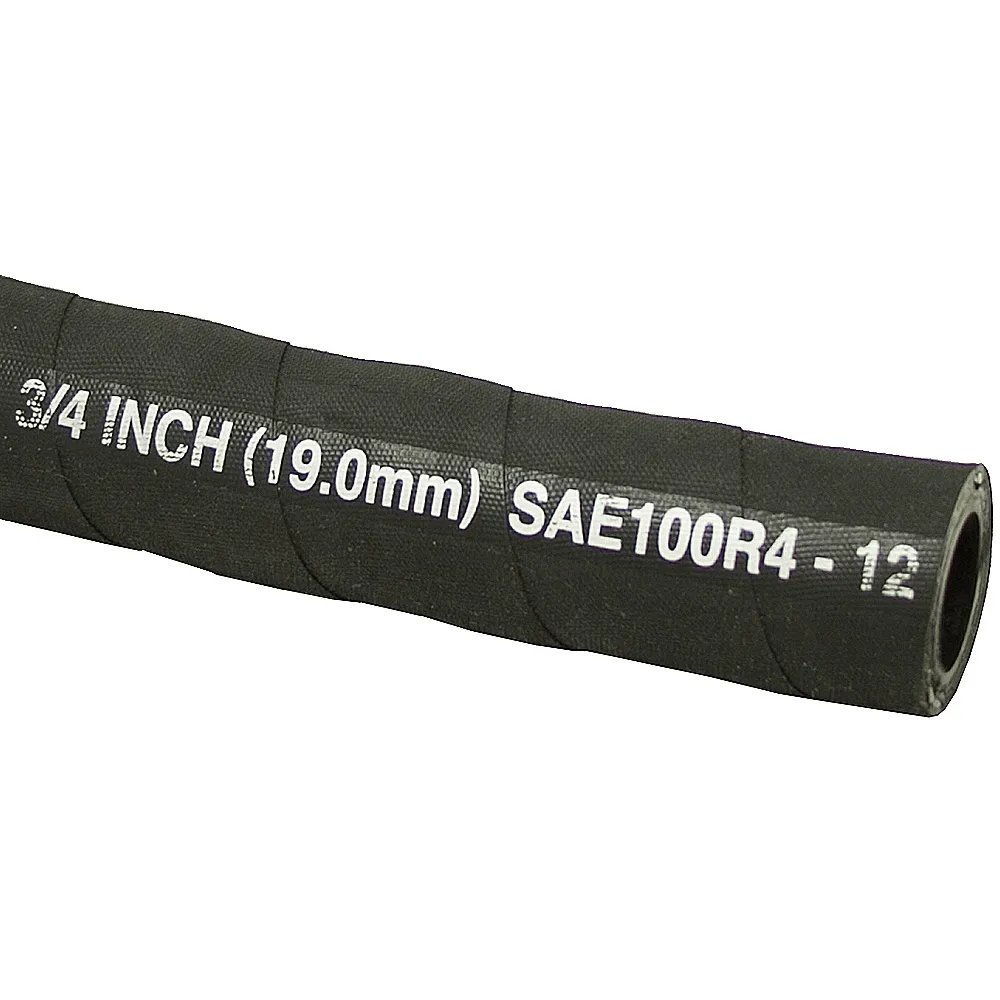
Figure 1: Illustration of a typical SAE 100 R4 hose cross-section.
Manufacturing Process of SAE 100 R4 Hoses
The manufacturing of an SAE 100 R4 hose is a meticulously controlled multi-stage process, ensuring compliance with demanding performance specifications. The general process flow involves:
-
1. Inner Tube Extrusion:
High-quality, oil-resistant synthetic rubber (e.g., NBR) pellets are fed into an extruder. Under heat and pressure, the rubber is melted and forced through a die to form a seamless inner tube of precise dimensions. This extrusion process ensures a smooth bore for optimal fluid flow and minimal pressure drop.
-
2. Reinforcement Application:
The extruded inner tube is then advanced to the reinforcement stage. Here, one or more layers of high-strength textile braids or spiral-plied synthetic yarn are applied, typically using a braiding or spiraling machine. Concurrently, a helical steel wire is integrated to provide the necessary crush and vacuum resistance, a distinguishing feature of SAE 100 R4. This complex layering ensures the hose maintains its shape under suction and can handle return line pressures.
-
3. Outer Cover Extrusion:
Similar to the inner tube, the outer cover material (abrasion, ozone, and oil-resistant synthetic rubber) is extruded over the reinforced core. This layer is crucial for protecting the hose from external damage and environmental degradation, significantly impacting its service life.
-
4. Curing/Vulcanization:
The uncured hose assembly is then subjected to a vulcanization process, often in a steam autoclave or continuous curing line. This process cross-links the rubber polymers, giving the hose its final mechanical properties, including elasticity, strength, and resistance to heat and chemicals. Precise temperature and pressure control are critical at this stage.
-
5. Testing and Quality Control:
Post-curing, each batch of hose undergoes rigorous testing to ensure it meets SAE J517, ISO 1436, and other relevant standards (e.g., DIN EN 853). Tests include dimensional checks (ID, OD, concentricity), proof pressure testing, burst pressure testing, vacuum collapse testing, ozone resistance, and impulse testing. These comprehensive tests verify the hose's integrity, pressure ratings, and service life, guaranteeing reliability in demanding applications.
This meticulous process, from raw material selection to final inspection, ensures that each SAE 100 R4 hose delivers consistent, high-performance capability, crucial for industries where uptime and safety are paramount.
Application Scenarios and Target Industries
The versatility and robust construction of the SAE 100 R4 hose make it an ideal choice for a wide array of low-pressure hydraulic applications across numerous heavy-duty industries. Its primary function as a suction and return line in hydraulic systems is critical for ensuring continuous fluid circulation and system efficiency.
Key Target Industries:
- Construction and Mining: Essential in heavy machinery such as excavators, bulldozers, wheel loaders, and drilling rigs for hydraulic return lines, suction lines to pumps, and pilot circuits. Its resistance to abrasion and robust construction withstand the harsh operational environments.
- Agriculture: Used in tractors, harvesters, and other farm equipment for various hydraulic functions, including steering systems, lifting mechanisms, and auxiliary circuits where low-pressure fluid transfer is needed.
- Material Handling: Forklifts, cranes, and conveyor systems rely on SAE 100 R4 for their hydraulic return and suction lines, ensuring the smooth and reliable operation of lifting and moving mechanisms.
- Petrochemical and Chemical Processing: In these industries, hoses must not only withstand low pressures but also exhibit excellent resistance to various fluids and environments. SAE 100 R4's material compatibility and robust cover make it suitable for fluid transfer in less corrosive, low-pressure applications.
- Metallurgy: Critical in steel mills and foundries for hydraulic power units in lifting, clamping, and material positioning equipment, where resilience to heat and robust design are valued.
- Water Supply & Drainage / Utilities: In municipal equipment and infrastructure projects, these hoses are used in systems requiring robust suction capability for fluid transfer, such as in vacuum trucks or pumping stations.
- General Manufacturing and Industrial Equipment: From machine tools to assembly lines, any application requiring reliable, flexible, low-pressure hydraulic lines benefits from the durable performance of SAE 100 R4 hose.
Advantages in Typical Application Scenarios:
- Corrosion Resistance: The outer cover's synthetic rubber compound provides robust protection against environmental factors, including ozone and UV, which can be critical in outdoor or chemically exposed settings.
- Energy Saving: A smooth inner bore minimizes friction, reducing pressure drops and contributing to overall hydraulic system efficiency, which translates to energy savings over operational lifetimes.
- Vibration Dampening: The flexible construction helps to absorb and dampen vibrations inherent in hydraulic machinery, reducing noise levels and extending the life of connected components.
- Longevity under Suction: The helical wire reinforcement ensures the hose maintains its shape even under severe vacuum, preventing collapse and ensuring uninterrupted fluid flow to pumps, thereby protecting expensive hydraulic pumps from cavitation damage.
- Ease of Installation: Its flexibility allows for easier routing and installation in tight spaces, reducing labor time and complexity during equipment assembly and maintenance.

Figure 2: SAE 100 R4 hose integrated into heavy construction equipment.
Technical Advantages and Performance Benchmarks
The design and material composition of the SAE 100 R4 hose provide several distinct technical advantages, making it a preferred choice for specific hydraulic applications:
- Superior Vacuum Resistance: Unlike many standard hydraulic hoses, the integral helical wire reinforcement of the SAE 100 R4 prevents collapse under full vacuum, crucial for suction lines drawing fluid from reservoirs. This capability protects hydraulic pumps from cavitation, a common cause of pump failure and decreased system efficiency.
- Exceptional Flexibility: Despite its robust construction, the combination of textile braids and helical wire allows for a relatively tight bend radius, facilitating installation in confined spaces and reducing stress on connections.
- Broad Temperature Operating Range: With an operating temperature range of -40°C to +100°C (-40°F to +212°F), it performs reliably in diverse climatic conditions, from freezing environments to high-temperature industrial settings.
- Excellent Abrasion and Weather Resistance: The robust synthetic rubber outer cover is engineered to withstand severe external abuse, including abrasion, ozone exposure, UV radiation, and various industrial chemicals, significantly extending the hose's service life in outdoor and harsh environments.
- Optimized Fluid Compatibility: The Nitrile (NBR) inner tube ensures compatibility with a broad spectrum of petroleum-based hydraulic fluids, mineral oils, and even some water-glycol solutions, making it versatile for many applications.
- Cost-Effectiveness over Lifetime: While initial costs may be comparable to other hoses, the extended service life due to superior resistance to collapse, abrasion, and environmental factors translates into lower total cost of ownership through reduced replacement frequency and maintenance.
Product Comparison: SAE 100 R4 vs. Other Low-Pressure Hoses (Illustrative)
| Feature | SAE 100 R4 | SAE 100 R3 (Textile Reinforced) | Industrial Water Hose (General Purpose) |
|---|---|---|---|
| Primary Application | Suction and Return Lines (Hydraulic) | Low-Pressure Hydraulic Lines | Water/Air Transfer (Non-Hydraulic) |
| Reinforcement | Textile braid + Helical wire | Two textile braids | Textile braid or fabric ply |
| Vacuum Resistance | Excellent (Full Vacuum) | Limited / Poor | None |
| Max Working Pressure | Up to 0.7 MPa (100 psi) | Up to 2.1 MPa (300 psi) | Typically < 1.0 MPa (150 psi) |
| Fluid Compatibility | Petroleum-based hydraulic fluids | Petroleum-based hydraulic fluids | Water, Air (specific for fluid) |
| Flexibility | Good | Excellent | Varies, generally good |
| Abrasion Resistance | High | Moderate | Varies, generally moderate |
This comparison highlights why selecting the correct SAE 100 R4 hose for its specific application is crucial, particularly for hydraulic suction and return lines where vacuum resistance is a non-negotiable requirement.
Vendor Comparison and Customized Solutions
When procuring hydraulic hoses like the SAE 100 R4, B2B decision-makers must evaluate vendors based on several critical criteria to ensure optimal system performance and long-term cost-effectiveness. Key factors for vendor comparison include:
- Quality and Certifications: Verify adherence to international standards like SAE J517, ISO 1436, and internal quality management systems such as ISO 9001. Reputable manufacturers provide test reports and material certifications.
- Technical Support and Expertise: Access to experienced engineers and technical support for system design, hose selection, and troubleshooting is invaluable.
- Product Range and Customization: A vendor offering a wide range of sizes and fitting options, alongside customization capabilities, can better meet specific project requirements.
- Lead Time and Supply Chain Reliability: Consistent product availability and reliable delivery schedules are essential for managing project timelines and preventing operational disruptions.
- Warranty and After-Sales Service: Clear warranty policies and responsive after-sales support demonstrate a commitment to product quality and customer satisfaction.
Customized Solutions for Specific Applications:
While SAE 100 R4 provides a standard specification, specific industrial environments often require tailored solutions. Leading manufacturers offer customization options for hydraulic hose SAE R4:
- Length and End Fittings: Hoses can be supplied in custom lengths with pre-assembled fittings (e.g., JIC, NPT, ORFS, flange connections) to simplify installation and reduce leak points.
- Cover Materials: For extreme environments, specialized outer cover compounds can be offered to enhance resistance to specific chemicals, extreme temperatures, or severe abrasion beyond standard capabilities.
- Inner Tube Materials: Although NBR is standard, applications involving non-petroleum-based fluids or aggressive chemicals might require different inner tube compounds (e.g., EPDM for phosphate esters or specific synthetic rubbers for broader chemical compatibility).
- Color Coding and Branding: Custom colors or external branding can aid in system identification, safety, and inventory management, particularly in complex hydraulic circuits.
- Protective Sleeves and Guards: For applications where hoses are exposed to external impact, crushing, or extreme heat, protective sleeves (e.g., fire sleeves, spring guards, textile sleeves) can be integrated or recommended.
Engaging with a vendor that offers flexible and responsive customization services ensures that the hydraulic system is optimized for performance, safety, and longevity in its unique operational context.

Figure 3: Customized SAE 100 R4 hose assemblies with specialized fittings.
Application Case Studies and Real-World Impact
Case Study 1: Heavy Equipment Manufacturer - Preventing Pump Cavitation
A leading manufacturer of large excavators faced recurring issues with hydraulic pump cavitation, leading to premature pump failures and costly downtime. The problem was traced to inadequate suction line performance, where previous hoses were collapsing under high vacuum loads, especially during cold starts or rapid fluid displacement. By replacing their existing suction lines with custom-fabricated SAE 100 R4 hoses featuring reinforced helical wire and robust inner tubes, the manufacturer observed a dramatic reduction in pump cavitation. The superior vacuum resistance of the SAE 100 R4 ensured a consistent fluid supply to the pumps, extending pump service life by over 30% and significantly reducing warranty claims and operational expenses.
Case Study 2: Steel Mill - Enhanced Durability in Harsh Environments
In a hot rolling mill environment, hydraulic return lines supporting the mill stands were frequently failing due to a combination of high ambient temperatures, abrasive dust, and occasional molten metal splash. Standard hoses deteriorated rapidly. After consultation, specialized SAE 100 R4 hoses with enhanced heat-resistant and abrasion-resistant outer covers were implemented. The robust construction of the SAE 100 R4 hose, coupled with the improved cover material, provided critical protection. The lifespan of the hydraulic lines increased by nearly 50%, leading to fewer interruptions in production and substantial savings in maintenance and replacement costs, underscoring the benefits of a durable SAE 100R4 hose.
Case Study 3: Agricultural Machinery - Flexibility and Reliability in Field Operations
An agricultural equipment OEM sought to improve the reliability and ease of maintenance for the hydraulic steering and auxiliary circuits on their new line of combine harvesters. The existing hoses lacked sufficient flexibility, making assembly difficult and leading to kinking in tight turns, particularly when the equipment was subject to dynamic movements in the field. Implementing custom-length SAE 100 R4 hydraulic hoses with optimized bend radii and factory-crimped fittings streamlined the assembly process. The inherent flexibility and reliability of the SAE 100 R4 hoses also led to fewer field failures, improving customer satisfaction and the overall reputation of the machinery.
Frequently Asked Questions (FAQ) about SAE 100 R4 Hoses
- Q: What makes SAE 100 R4 different from other SAE 100 R series hoses?
- A: The primary distinguishing feature of SAE 100 R4 is its helical wire reinforcement, which provides superior resistance to collapse under vacuum conditions. This makes it specifically designed for suction and return lines, whereas other R series hoses (e.g., R1, R2) are typically designed for higher working pressures and do not offer significant vacuum resistance.
- Q: Can SAE 100 R4 hoses be used for high-pressure applications?
- A: No. SAE 100 R4 is rated for low-pressure applications, primarily suction and return lines, with a maximum working pressure typically around 0.7 MPa (100 psi). Using it in high-pressure applications can lead to catastrophic failure, severe injury, and equipment damage. Always match the hose pressure rating to the system's maximum operating pressure.
- Q: What type of fluids is SAE 100 R4 compatible with?
- A: Standard SAE 100 R4 hoses are designed for compatibility with petroleum-based hydraulic fluids, mineral oils, and anti-wear hydraulic fluids. Some variants may be compatible with water-glycol solutions. Always confirm fluid compatibility with the manufacturer's specifications for specific applications, especially when dealing with synthetic or fire-resistant fluids.
- Q: What is the typical service life of an SAE 100 R4 hose?
- A: The service life varies significantly based on application severity, operating conditions (temperature, pressure cycles, bending, abrasion), fluid type, and maintenance practices. Under ideal conditions and proper installation, a high-quality SAE 100 R4 hose can last for several years. Regular inspection and preventive maintenance are crucial for maximizing service life and identifying potential issues early.
Lead Time, Warranty, and Customer Support
Lead Time and Fulfillment:
We understand the critical importance of timely delivery in industrial operations. Our standard lead times for SAE 100 R4 hoses typically range from 2-4 weeks for standard products and 4-6 weeks for customized orders, depending on volume and complexity. We maintain a robust inventory of raw materials and common hose sizes to facilitate quicker turnarounds for urgent requirements. For specific project timelines, we encourage direct consultation with our sales team for precise scheduling and expedited options.
Warranty Commitments:
All our SAE 100 R4 hydraulic hoses are backed by a comprehensive 12-month warranty against manufacturing defects and material failures under normal operating conditions. This commitment reflects our confidence in the quality and reliability of our products, which are rigorously tested to meet or exceed industry standards. Full warranty terms and conditions are available upon request or on our website.
Dedicated Customer Support:
Our team of experienced technical support specialists and account managers is dedicated to providing unparalleled service. From initial product selection and technical consultation to post-purchase support and troubleshooting, we ensure our clients receive expert guidance. You can reach our support team via phone, email, or through our website's contact portal for prompt and professional assistance. We pride ourselves on building long-term partnerships through reliable products and exceptional service.
Conclusion
The SAE 100 R4 hydraulic hose stands as a testament to engineering excellence in low-pressure fluid transfer applications. Its unique construction with helical wire reinforcement provides critical vacuum resistance, ensuring the longevity of hydraulic pumps and the smooth operation of vital industrial machinery. With its robust material composition, wide temperature compatibility, and resilience against environmental degradation, the SAE 100 R4 is an indispensable component across heavy industries such as construction, mining, agriculture, and manufacturing. Choosing a high-quality SAE 100 R4 hose and partnering with a reputable vendor offering comprehensive support and customization options is paramount for optimizing hydraulic system performance, reducing operational costs, and ensuring safety and reliability in demanding industrial settings. Investing in superior hose technology translates directly into enhanced productivity and sustained operational efficiency for critical B2B applications.
References
- SAE International. "SAE J517: Hydraulic Hose." Warrendale, PA: SAE International, 2017.
- International Organization for Standardization. "ISO 1436: Rubber hoses and hose assemblies — Wire-braid-reinforced hydraulic type — Specification." Geneva, Switzerland: ISO, 2018.
- Parker Hannifin Corporation. "Hose Product Technical Guide." Cleveland, OH: Parker Hannifin, 2020.
- Hydraulic & Pneumatic Systems. "Understanding Hydraulic Hose Design and Selection." Technical Journal Vol. 45, No. 3, 2021.
- National Fluid Power Association. "Fluid Power Handbook." Milwaukee, WI: NFPA, 2019.
The Crucial Role of SAE 100 R4 Hydraulic Hoses in Industrial Applications
In the realm of modern industrial machinery and equipment, the integrity and performance of hydraulic systems are paramount. At the core of these systems lies the hydraulic hose, a critical component responsible for transmitting fluid power reliably and efficiently. Among the various classifications, the SAE 100 R4 specification denotes a heavy-duty, wire-reinforced suction and return hose engineered for low-pressure applications, specifically designed to handle petroleum-based hydraulic fluids within a temperature range of -40°C to +100°C (-40°F to +212°F). Its robust construction makes it indispensable across numerous sectors, ensuring operational continuity and safety where fluid transfer under suction or low pressure is required.
This comprehensive guide delves into the technical intricacies, manufacturing processes, application versatility, and strategic advantages of SAE 100 R4 hoses, providing B2B decision-makers and engineers with essential insights for optimal system design and procurement. We will explore its contribution to industry trends, detail its specifications, and offer data-backed perspectives to underscore its value in demanding environments.
Industry Trends and the Evolution of SAE 100 R4 Hoses
The industrial landscape is continuously evolving, driven by demands for increased efficiency, enhanced safety, and reduced environmental impact. For hydraulic components like the SAE 100 R4 hose, this translates into several key trends:
- Material Innovation: Advancements in synthetic rubber compounds and reinforcement materials are leading to hoses with superior abrasion resistance, ozone resistance, and chemical compatibility, extending service life and reducing maintenance.
- Eco-Friendly Solutions: There's a growing push for hoses compatible with biodegradable hydraulic fluids and manufacturing processes with lower environmental footprints.
- Higher Performance in Low-Pressure: While primarily for suction and return, ongoing improvements aim to offer robust performance under transient low-pressure surges and sustained suction without collapse.
- Smart Systems Integration: Future trends may include hoses integrated with sensors for condition monitoring, allowing for predictive maintenance and real-time performance tracking, enhancing the reliability of systems using SAE 100 R4.
- Global Standardization and Traceability: Increased emphasis on adherence to international standards (ISO, EN) and full product traceability from manufacturing to end-use to ensure quality and safety across global supply chains.
These trends underscore the importance of selecting high-quality components like the SAE 100 R4 hose, which can adapt to evolving operational demands and contribute to the overall resilience and sustainability of industrial systems.
Technical Specifications and Construction of SAE 100 R4
The SAE 100 R4 hose is specifically engineered to meet the stringent requirements of suction and return lines in medium to heavy-duty industrial applications. Its construction is robust and designed for longevity and reliability under challenging conditions. Typically, an SAE 100 R4 hose comprises three main layers:
- Inner Tube: Constructed from an oil-resistant synthetic rubber compound, often Nitrile (NBR), which ensures excellent compatibility with petroleum-based hydraulic fluids, mineral oils, and anti-wear fluids. This layer prevents degradation from the conveyed media and maintains fluid purity.
- Reinforcement: A critical layer consisting of one or more plies of textile braid or spiral-plied synthetic yarn, often combined with a helical spiral wire. The wire prevents hose collapse under vacuum or suction conditions, while the textile reinforcement provides structural integrity and moderate pressure resistance for return line service.
- Outer Cover: Made from a weather, abrasion, and oil-resistant synthetic rubber compound (e.g., Neoprene or a blend). This cover protects the inner layers from external environmental factors, including ozone, UV radiation, abrasion, and corrosive chemicals, ensuring durability in harsh industrial settings.
The design ensures flexibility, enabling easy routing in complex machinery, and provides effective dampening of vibrations transmitted through hydraulic lines. The vacuum resistance is a distinguishing feature, preventing kinking and collapse even under high suction loads.
Key Product Specifications for Hydraulic Hose SAE R4
| Parameter | Typical Value / Description | Unit / Standard |
|---|---|---|
| Hose Type | SAE 100 R4, Suction and Return | SAE J517 |
| Inner Tube Material | Oil-resistant Synthetic Rubber (e.g., Nitrile) | |
| Reinforcement | Textile braid with helical spiral wire | |
| Outer Cover Material | Abrasion, Ozone & Weather-resistant Synthetic Rubber | |
| Temperature Range | -40°C to +100°C (-40°F to +212°F) | |
| Operating Pressure (Max) | Up to 0.7 MPa (7 bar / 100 psi) - Varies by ID | ISO 1436 |
| Vacuum Resistance | Full vacuum (750 mmHg / 29.5 inHg) | |
| Bend Radius (Min) | 6 to 10 times ID (Varies by ID) | |
| Fluid Compatibility | Petroleum-based hydraulic fluids, mineral oils, water-glycol solutions |

Figure 1: Illustration of a typical SAE 100 R4 hose cross-section.
Manufacturing Process of SAE 100 R4 Hoses
The manufacturing of an SAE 100 R4 hose is a meticulously controlled multi-stage process, ensuring compliance with demanding performance specifications. The general process flow involves:
-
1. Inner Tube Extrusion:
High-quality, oil-resistant synthetic rubber (e.g., NBR) pellets are fed into an extruder. Under heat and pressure, the rubber is melted and forced through a die to form a seamless inner tube of precise dimensions. This extrusion process ensures a smooth bore for optimal fluid flow and minimal pressure drop.
-
2. Reinforcement Application:
The extruded inner tube is then advanced to the reinforcement stage. Here, one or more layers of high-strength textile braids or spiral-plied synthetic yarn are applied, typically using a braiding or spiraling machine. Concurrently, a helical steel wire is integrated to provide the necessary crush and vacuum resistance, a distinguishing feature of SAE 100 R4. This complex layering ensures the hose maintains its shape under suction and can handle return line pressures.
-
3. Outer Cover Extrusion:
Similar to the inner tube, the outer cover material (abrasion, ozone, and oil-resistant synthetic rubber) is extruded over the reinforced core. This layer is crucial for protecting the hose from external damage and environmental degradation, significantly impacting its service life.
-
4. Curing/Vulcanization:
The uncured hose assembly is then subjected to a vulcanization process, often in a steam autoclave or continuous curing line. This process cross-links the rubber polymers, giving the hose its final mechanical properties, including elasticity, strength, and resistance to heat and chemicals. Precise temperature and pressure control are critical at this stage.
-
5. Testing and Quality Control:
Post-curing, each batch of hose undergoes rigorous testing to ensure it meets SAE J517, ISO 1436, and other relevant standards (e.g., DIN EN 853). Tests include dimensional checks (ID, OD, concentricity), proof pressure testing, burst pressure testing, vacuum collapse testing, ozone resistance, and impulse testing. These comprehensive tests verify the hose's integrity, pressure ratings, and service life, guaranteeing reliability in demanding applications.
This meticulous process, from raw material selection to final inspection, ensures that each SAE 100 R4 hose delivers consistent, high-performance capability, crucial for industries where uptime and safety are paramount.
Application Scenarios and Target Industries
The versatility and robust construction of the SAE 100 R4 hose make it an ideal choice for a wide array of low-pressure hydraulic applications across numerous heavy-duty industries. Its primary function as a suction and return line in hydraulic systems is critical for ensuring continuous fluid circulation and system efficiency.
Key Target Industries:
- Construction and Mining: Essential in heavy machinery such as excavators, bulldozers, wheel loaders, and drilling rigs for hydraulic return lines, suction lines to pumps, and pilot circuits. Its resistance to abrasion and robust construction withstand the harsh operational environments.
- Agriculture: Used in tractors, harvesters, and other farm equipment for various hydraulic functions, including steering systems, lifting mechanisms, and auxiliary circuits where low-pressure fluid transfer is needed.
- Material Handling: Forklifts, cranes, and conveyor systems rely on SAE 100 R4 for their hydraulic return and suction lines, ensuring the smooth and reliable operation of lifting and moving mechanisms.
- Petrochemical and Chemical Processing: In these industries, hoses must not only withstand low pressures but also exhibit excellent resistance to various fluids and environments. SAE 100 R4's material compatibility and robust cover make it suitable for fluid transfer in less corrosive, low-pressure applications.
- Metallurgy: Critical in steel mills and foundries for hydraulic power units in lifting, clamping, and material positioning equipment, where resilience to heat and robust design are valued.
- Water Supply & Drainage / Utilities: In municipal equipment and infrastructure projects, these hoses are used in systems requiring robust suction capability for fluid transfer, such as in vacuum trucks or pumping stations.
- General Manufacturing and Industrial Equipment: From machine tools to assembly lines, any application requiring reliable, flexible, low-pressure hydraulic lines benefits from the durable performance of SAE 100 R4 hose.
Advantages in Typical Application Scenarios:
- Corrosion Resistance: The outer cover's synthetic rubber compound provides robust protection against environmental factors, including ozone and UV, which can be critical in outdoor or chemically exposed settings.
- Energy Saving: A smooth inner bore minimizes friction, reducing pressure drops and contributing to overall hydraulic system efficiency, which translates to energy savings over operational lifetimes.
- Vibration Dampening: The flexible construction helps to absorb and dampen vibrations inherent in hydraulic machinery, reducing noise levels and extending the life of connected components.
- Longevity under Suction: The helical wire reinforcement ensures the hose maintains its shape even under severe vacuum, preventing collapse and ensuring uninterrupted fluid flow to pumps, thereby protecting expensive hydraulic pumps from cavitation damage.
- Ease of Installation: Its flexibility allows for easier routing and installation in tight spaces, reducing labor time and complexity during equipment assembly and maintenance.

Figure 2: SAE 100 R4 hose integrated into heavy construction equipment.
Technical Advantages and Performance Benchmarks
The design and material composition of the SAE 100 R4 hose provide several distinct technical advantages, making it a preferred choice for specific hydraulic applications:
- Superior Vacuum Resistance: Unlike many standard hydraulic hoses, the integral helical wire reinforcement of the SAE 100 R4 prevents collapse under full vacuum, crucial for suction lines drawing fluid from reservoirs. This capability protects hydraulic pumps from cavitation, a common cause of pump failure and decreased system efficiency.
- Exceptional Flexibility: Despite its robust construction, the combination of textile braids and helical wire allows for a relatively tight bend radius, facilitating installation in confined spaces and reducing stress on connections.
- Broad Temperature Operating Range: With an operating temperature range of -40°C to +100°C (-40°F to +212°F), it performs reliably in diverse climatic conditions, from freezing environments to high-temperature industrial settings.
- Excellent Abrasion and Weather Resistance: The robust synthetic rubber outer cover is engineered to withstand severe external abuse, including abrasion, ozone exposure, UV radiation, and various industrial chemicals, significantly extending the hose's service life in outdoor and harsh environments.
- Optimized Fluid Compatibility: The Nitrile (NBR) inner tube ensures compatibility with a broad spectrum of petroleum-based hydraulic fluids, mineral oils, and even some water-glycol solutions, making it versatile for many applications.
- Cost-Effectiveness over Lifetime: While initial costs may be comparable to other hoses, the extended service life due to superior resistance to collapse, abrasion, and environmental factors translates into lower total cost of ownership through reduced replacement frequency and maintenance.
Product Comparison: SAE 100 R4 vs. Other Low-Pressure Hoses (Illustrative)
| Feature | SAE 100 R4 | SAE 100 R3 (Textile Reinforced) | Industrial Water Hose (General Purpose) |
|---|---|---|---|
| Primary Application | Suction and Return Lines (Hydraulic) | Low-Pressure Hydraulic Lines | Water/Air Transfer (Non-Hydraulic) |
| Reinforcement | Textile braid + Helical wire | Two textile braids | Textile braid or fabric ply |
| Vacuum Resistance | Excellent (Full Vacuum) | Limited / Poor | None |
| Max Working Pressure | Up to 0.7 MPa (100 psi) | Up to 2.1 MPa (300 psi) | Typically < 1.0 MPa (150 psi) |
| Fluid Compatibility | Petroleum-based hydraulic fluids | Petroleum-based hydraulic fluids | Water, Air (specific for fluid) |
| Flexibility | Good | Excellent | Varies, generally good |
| Abrasion Resistance | High | Moderate | Varies, generally moderate |
This comparison highlights why selecting the correct SAE 100 R4 hose for its specific application is crucial, particularly for hydraulic suction and return lines where vacuum resistance is a non-negotiable requirement.
Vendor Comparison and Customized Solutions
When procuring hydraulic hoses like the SAE 100 R4, B2B decision-makers must evaluate vendors based on several critical criteria to ensure optimal system performance and long-term cost-effectiveness. Key factors for vendor comparison include:
- Quality and Certifications: Verify adherence to international standards like SAE J517, ISO 1436, and internal quality management systems such as ISO 9001. Reputable manufacturers provide test reports and material certifications.
- Technical Support and Expertise: Access to experienced engineers and technical support for system design, hose selection, and troubleshooting is invaluable.
- Product Range and Customization: A vendor offering a wide range of sizes and fitting options, alongside customization capabilities, can better meet specific project requirements.
- Lead Time and Supply Chain Reliability: Consistent product availability and reliable delivery schedules are essential for managing project timelines and preventing operational disruptions.
- Warranty and After-Sales Service: Clear warranty policies and responsive after-sales support demonstrate a commitment to product quality and customer satisfaction.
Customized Solutions for Specific Applications:
While SAE 100 R4 provides a standard specification, specific industrial environments often require tailored solutions. Leading manufacturers offer customization options for hydraulic hose SAE R4:
- Length and End Fittings: Hoses can be supplied in custom lengths with pre-assembled fittings (e.g., JIC, NPT, ORFS, flange connections) to simplify installation and reduce leak points.
- Cover Materials: For extreme environments, specialized outer cover compounds can be offered to enhance resistance to specific chemicals, extreme temperatures, or severe abrasion beyond standard capabilities.
- Inner Tube Materials: Although NBR is standard, applications involving non-petroleum-based fluids or aggressive chemicals might require different inner tube compounds (e.g., EPDM for phosphate esters or specific synthetic rubbers for broader chemical compatibility).
- Color Coding and Branding: Custom colors or external branding can aid in system identification, safety, and inventory management, particularly in complex hydraulic circuits.
- Protective Sleeves and Guards: For applications where hoses are exposed to external impact, crushing, or extreme heat, protective sleeves (e.g., fire sleeves, spring guards, textile sleeves) can be integrated or recommended.
Engaging with a vendor that offers flexible and responsive customization services ensures that the hydraulic system is optimized for performance, safety, and longevity in its unique operational context.

Figure 3: Customized SAE 100 R4 hose assemblies with specialized fittings.
Application Case Studies and Real-World Impact
Case Study 1: Heavy Equipment Manufacturer - Preventing Pump Cavitation
A leading manufacturer of large excavators faced recurring issues with hydraulic pump cavitation, leading to premature pump failures and costly downtime. The problem was traced to inadequate suction line performance, where previous hoses were collapsing under high vacuum loads, especially during cold starts or rapid fluid displacement. By replacing their existing suction lines with custom-fabricated SAE 100 R4 hoses featuring reinforced helical wire and robust inner tubes, the manufacturer observed a dramatic reduction in pump cavitation. The superior vacuum resistance of the SAE 100 R4 ensured a consistent fluid supply to the pumps, extending pump service life by over 30% and significantly reducing warranty claims and operational expenses.
Case Study 2: Steel Mill - Enhanced Durability in Harsh Environments
In a hot rolling mill environment, hydraulic return lines supporting the mill stands were frequently failing due to a combination of high ambient temperatures, abrasive dust, and occasional molten metal splash. Standard hoses deteriorated rapidly. After consultation, specialized SAE 100 R4 hoses with enhanced heat-resistant and abrasion-resistant outer covers were implemented. The robust construction of the SAE 100 R4 hose, coupled with the improved cover material, provided critical protection. The lifespan of the hydraulic lines increased by nearly 50%, leading to fewer interruptions in production and substantial savings in maintenance and replacement costs, underscoring the benefits of a durable SAE 100R4 hose.
Case Study 3: Agricultural Machinery - Flexibility and Reliability in Field Operations
An agricultural equipment OEM sought to improve the reliability and ease of maintenance for the hydraulic steering and auxiliary circuits on their new line of combine harvesters. The existing hoses lacked sufficient flexibility, making assembly difficult and leading to kinking in tight turns, particularly when the equipment was subject to dynamic movements in the field. Implementing custom-length SAE 100 R4 hydraulic hoses with optimized bend radii and factory-crimped fittings streamlined the assembly process. The inherent flexibility and reliability of the SAE 100 R4 hoses also led to fewer field failures, improving customer satisfaction and the overall reputation of the machinery.
Frequently Asked Questions (FAQ) about SAE 100 R4 Hoses
- Q: What makes SAE 100 R4 different from other SAE 100 R series hoses?
- A: The primary distinguishing feature of SAE 100 R4 is its helical wire reinforcement, which provides superior resistance to collapse under vacuum conditions. This makes it specifically designed for suction and return lines, whereas other R series hoses (e.g., R1, R2) are typically designed for higher working pressures and do not offer significant vacuum resistance.
- Q: Can SAE 100 R4 hoses be used for high-pressure applications?
- A: No. SAE 100 R4 is rated for low-pressure applications, primarily suction and return lines, with a maximum working pressure typically around 0.7 MPa (100 psi). Using it in high-pressure applications can lead to catastrophic failure, severe injury, and equipment damage. Always match the hose pressure rating to the system's maximum operating pressure.
- Q: What type of fluids is SAE 100 R4 compatible with?
- A: Standard SAE 100 R4 hoses are designed for compatibility with petroleum-based hydraulic fluids, mineral oils, and anti-wear hydraulic fluids. Some variants may be compatible with water-glycol solutions. Always confirm fluid compatibility with the manufacturer's specifications for specific applications, especially when dealing with synthetic or fire-resistant fluids.
- Q: What is the typical service life of an SAE 100 R4 hose?
- A: The service life varies significantly based on application severity, operating conditions (temperature, pressure cycles, bending, abrasion), fluid type, and maintenance practices. Under ideal conditions and proper installation, a high-quality SAE 100 R4 hose can last for several years. Regular inspection and preventive maintenance are crucial for maximizing service life and identifying potential issues early.
Lead Time, Warranty, and Customer Support
Lead Time and Fulfillment:
We understand the critical importance of timely delivery in industrial operations. Our standard lead times for SAE 100 R4 hoses typically range from 2-4 weeks for standard products and 4-6 weeks for customized orders, depending on volume and complexity. We maintain a robust inventory of raw materials and common hose sizes to facilitate quicker turnarounds for urgent requirements. For specific project timelines, we encourage direct consultation with our sales team for precise scheduling and expedited options.
Warranty Commitments:
All our SAE 100 R4 hydraulic hoses are backed by a comprehensive 12-month warranty against manufacturing defects and material failures under normal operating conditions. This commitment reflects our confidence in the quality and reliability of our products, which are rigorously tested to meet or exceed industry standards. Full warranty terms and conditions are available upon request or on our website.
Dedicated Customer Support:
Our team of experienced technical support specialists and account managers is dedicated to providing unparalleled service. From initial product selection and technical consultation to post-purchase support and troubleshooting, we ensure our clients receive expert guidance. You can reach our support team via phone, email, or through our website's contact portal for prompt and professional assistance. We pride ourselves on building long-term partnerships through reliable products and exceptional service.
Conclusion
The SAE 100 R4 hydraulic hose stands as a testament to engineering excellence in low-pressure fluid transfer applications. Its unique construction with helical wire reinforcement provides critical vacuum resistance, ensuring the longevity of hydraulic pumps and the smooth operation of vital industrial machinery. With its robust material composition, wide temperature compatibility, and resilience against environmental degradation, the SAE 100 R4 is an indispensable component across heavy industries such as construction, mining, agriculture, and manufacturing. Choosing a high-quality SAE 100 R4 hose and partnering with a reputable vendor offering comprehensive support and customization options is paramount for optimizing hydraulic system performance, reducing operational costs, and ensuring safety and reliability in demanding industrial settings. Investing in superior hose technology translates directly into enhanced productivity and sustained operational efficiency for critical B2B applications.
References
- SAE International. "SAE J517: Hydraulic Hose." Warrendale, PA: SAE International, 2017.
- International Organization for Standardization. "ISO 1436: Rubber hoses and hose assemblies — Wire-braid-reinforced hydraulic type — Specification." Geneva, Switzerland: ISO, 2018.
- Parker Hannifin Corporation. "Hose Product Technical Guide." Cleveland, OH: Parker Hannifin, 2020.
- Hydraulic & Pneumatic Systems. "Understanding Hydraulic Hose Design and Selection." Technical Journal Vol. 45, No. 3, 2021.
- National Fluid Power Association. "Fluid Power Handbook." Milwaukee, WI: NFPA, 2019.
Z-Smartflex delivers superior-quality industrial hoses and fittings with global reliability, offering you durable solutions and exceptional service for all your fluid transfer needs.





